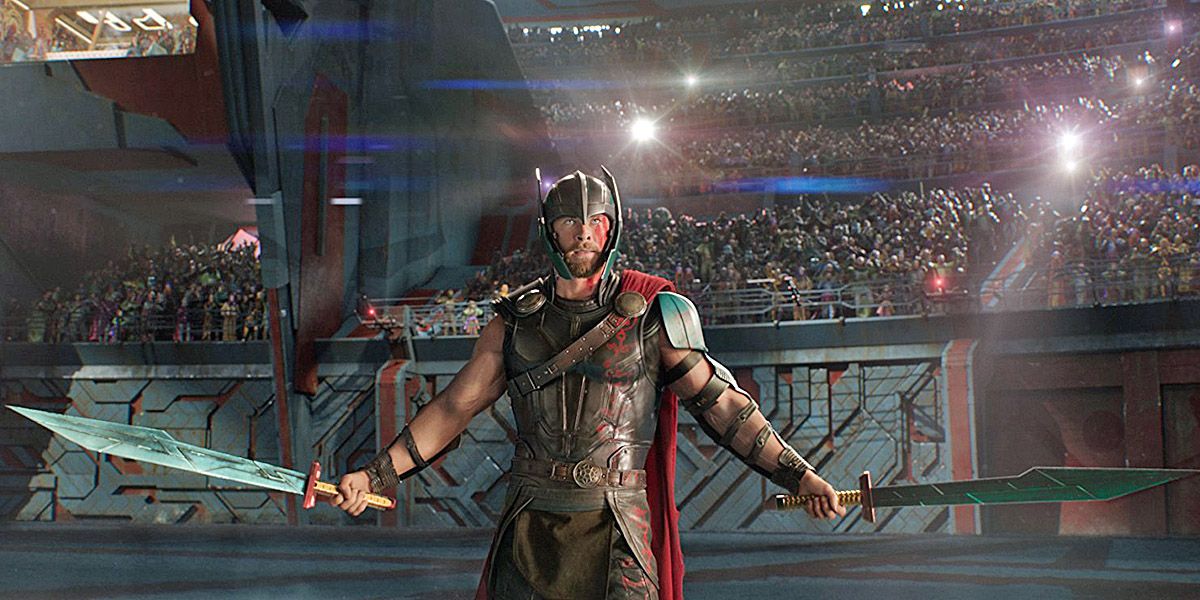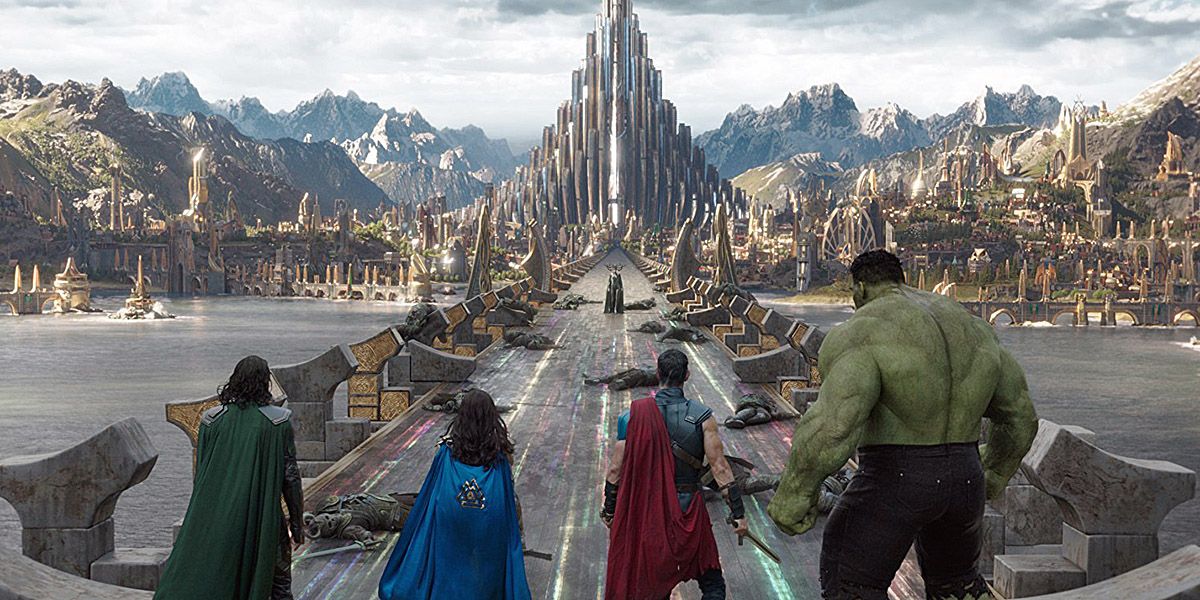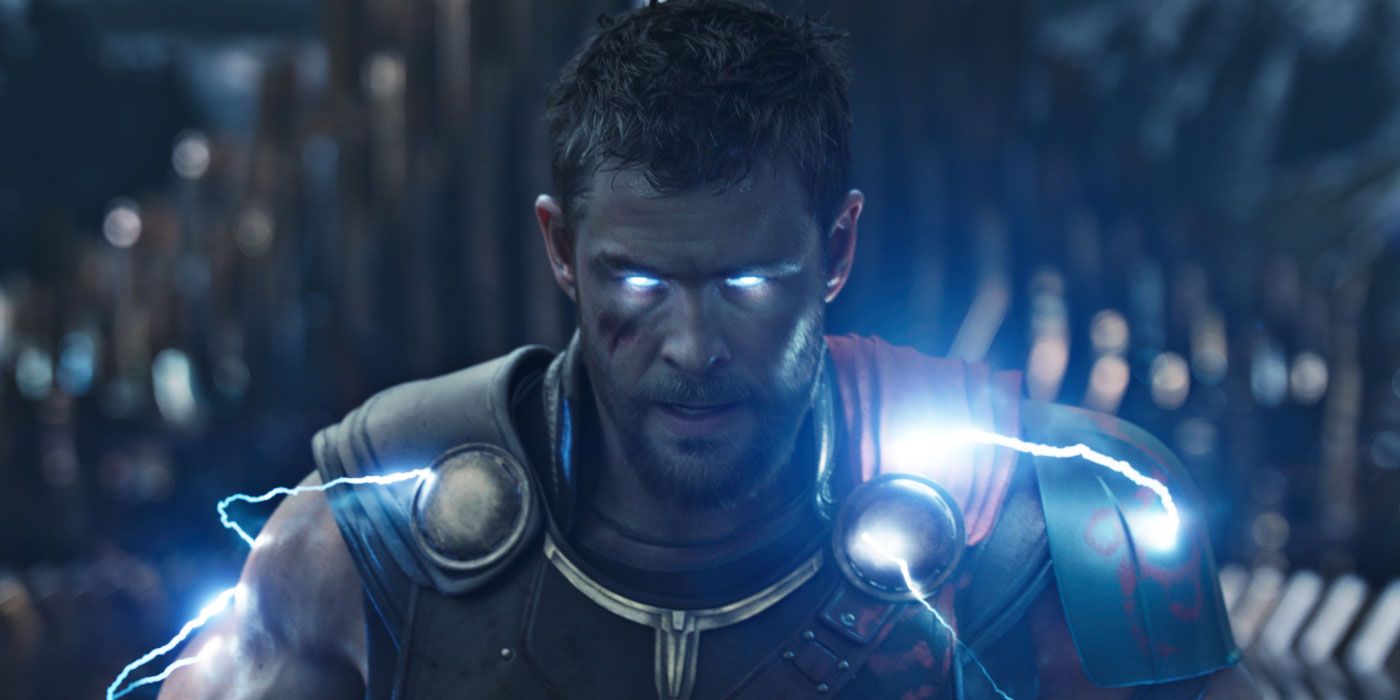WARNING: This article contains minor spoilers for Marvel's Thor: Ragnarok, in theaters now.
Each Marvel Cinematic Universe property embraces a different genre. For instance, the Captain America films move between war story and espionage thriller, while Netflix's Jessica Jones leans into noir. It’s part of what makes these franchises feel distinct, yet somehow similar, and the same holds true for Thor: Ragnarok. Not only is the sequel a departure from its two predecessors, which mashed together cosmic adventure and Shakespearean melodrama, it represents something new for the MCU. Sure, it's an action-comedy, in the same vein as Guardians of the Galaxy, but it also may be Marvel's first attempt at a video game movie.
RELATED: Thor: Ragnarok is an "Unabashed Love Letter" to Jack Kirby
To be clear, that isn't saying Ragnarok is based on a video game. Director Taika Waititi & Co. made it clear their inspiration drew from such comic book inspirations as the works of Thor co-creator Jack Kirby, Walter Simonson's seminal run on the Marvel series, and Jason Aaron's God of Thunder. But watching the film, it certainly feels like a video game movie -- or at least one that takes elements of video games from three eras to graft onto its. Namely, the 1980s, the '90s/'00s and today.
The '80s are an easy place to start as, like the more popular games of those days, Thor: Ragnarok possesses a fairly straightforward plot in the vein of Mario or Legend of Zelda: The hero needs to find the MacGuffin that will allow him to defeat the villain. It's not exactly groundbreaking, but just as how those games utilize that simple thread to lead players on an enchanting journey through colorful landscapes, so it goes with Ragnarok. Asgard, Sakaar and the film’s other locations tell stories using their visuals alone, much like Hyrule or the Mushroom Kingdom. This may be a 2017 film, but its production design speaks more to the '80s than to most games of today, really.
Speaking of design, the Thor franchise has always had a bit of a Zelda design approach. Naturally, Asgard serves as the very literal “overworld” for Marvel's god of thunder, his one spot of refuge. (If you’ve yet to play a Zelda, think the Tower in Destiny.) It’s only through the Bifrost Bridge that he can travel to the other Nine Realms -- or “dungeons,” if we’re to continue the Zelda comparisons. Sadly, the mode of transportation used by Thor and the other Asgardians isn’t as fluid as in Zelda or Destiny 2. It’s not explicitly stated, but it seems that, if you’re not already in Asgard, you have to Bifrost back to Asgard first, and then head your desired destination. But the thunder god's internal logic very much fits with Link's, only with more hammers and flying.
Page 2: [valnet-url-page page=2 paginated=0 text='The%20God%20of%20Thunder%20Has%20Similarities%20to%20God%20of%20War']
Whereas '80s games are echoed in the visuals and the story of Thor: Ragnarok, the 1990s and 2000s can be found in its mechanics and music. The former is most obvious. If you’ve played any God of War sequel or the Metroid Prime franchise, you know you can’t start the game at 100 percent; you have to lose your power and build back up to full strength, and come out of the experience stronger for it. It’s a well-established trope, but one that entices you to play through to the end. Even if you get your powers back, they may come with additions or in an entirely new form.
Sure enough, that’s what happens in Ragnarok. Once Mjolnir is shattered by Hela (Cate Blanchett), Chris Hemsworth's thunder god is no longer able to channel lightning. As such, he has to make due with new weapons and colorful friends. While fighting the Incredible Hulk (Mark Ruffalo), the film's “midboss," Thor gets a burst of the “new” power he’ll only fully unlock later, during the climactic battle with Hela.
Gearbox’s Borderlands certainly wasn’t the first four-player co-op action-RPG, but it definitely contributed to the present-day popularity of co-op play. Love it or hate it, the loot-'n’-shoot series is chock-full of personality and humor that would fit in nicely with that of Ragnarok, and vice versa. (Devil’s Anus, anyone?) The bones of a co-op game are in its ultimate four-hero dynamic during the film's third act -- Thor, Hulk, Valkyrie and Loki, plus Korg, Heimdall and Miek as “DLC” characters.
RELATED: Who (and What) Doesn't Survive Thor: Ragnarok
Musically, Ragnarok is an '80s throwback, with Mark Mothersbaugh’s synth-heavy score that sets the film apart from the rest of the MCU. That said, it definitely possesses vibes that veer more toward games of the '90s and '00s. The synth-based tracks wouldn't be out of place in an early Ratchet & Clank title, although that mainly applies to the Sakaaran songs, particularly in "Parade." Tunes with more traditional instruments are reminiscent of Mass Effect in the way they’re mixed with the synths, reminding you that Thor a flesh-and-blood character who just so happens to be in a larger-than-life scenario involving gods and monsters.
Finally, there’s the current era of gaming, which Ragnarok emulates through its action sequences. They’re well staged and choreographed, and it’s easy to imagine that, were Ragnarok a video game, these would be big sequences you’d play through, ones that would try to ape set pieces in a big-budget AAA release. Look at the chase through Sakaar as Thor and the Revengers attempt to leave the planet; it’s an airborne pursuit involving five or six ships, multiple characters bouncing around between the vessels, all accompanied by plenty of explosions and carnage.
Further, the pacing of some sequences, such as two crucial ones involving Thor and his father Odin, are soft and meditative, reflective of moments in games in which the objective is not to fight, but instead to soak in the emotions of the cutscene. Games have placed a greater emphasis on story and emotions over the past four or five years, often allowing spectacle to take a back seat to emotion. These father-and-son moments in Ragnarok aren’t the MCU’s equivalent to the more emotion-heavy scenes in a game like Uncharted 4, but they demonstrate the relationship between the two has progressed to a point to where the moments are earned.
It’s doubtful that much, or any, of this was intentionally woven into the film’s DNA by either the writers or Waititi. But, if you chart out Thor's solo trilogy by current gaming=franchise timelines -- big adventure (Thor), expansion (The Dark World) and then the next big adventure (Ragnarok) -- then it makes some degree of sense. Thor’s basic concept is pretty game-ready, in that he’s a hero who travels the cosmos fighting bad guys. How far Marvel can take the idea of him as a video game character in his own movies is up for debate, but it’d certainly be interesting to see the studio try to accomplish that with proper intent rather than pure happenstance.
In theaters nationwide, director Taika Waititi’s Thor: Ragnarok stars Chris Hemsworth as Thor, Mark Ruffalo as Hulk, Tessa Thompson as Valkyrie, Tom Hiddleston as Loki, Cate Blanchett as Hela, Jeff Goldblum as The Grandmaster, Idris Elba as Heimdall, Anthony Hopkins as Odin, and Karl Urban as Skurge.



